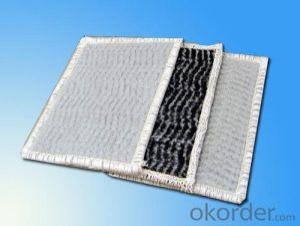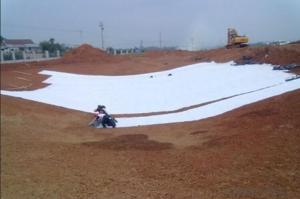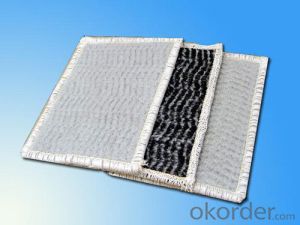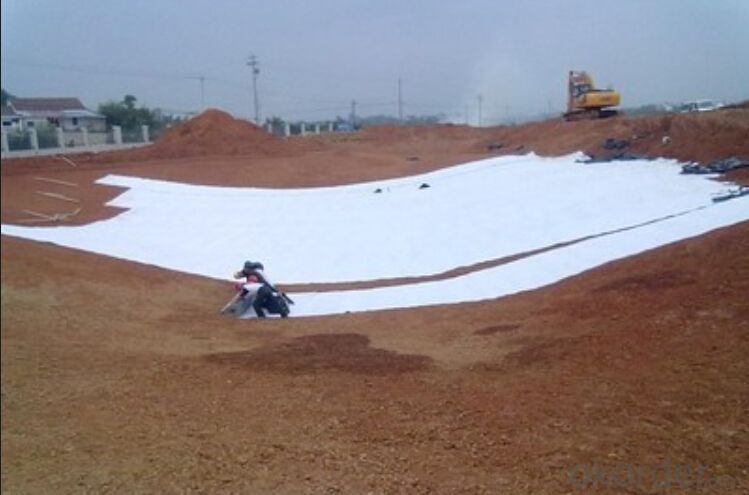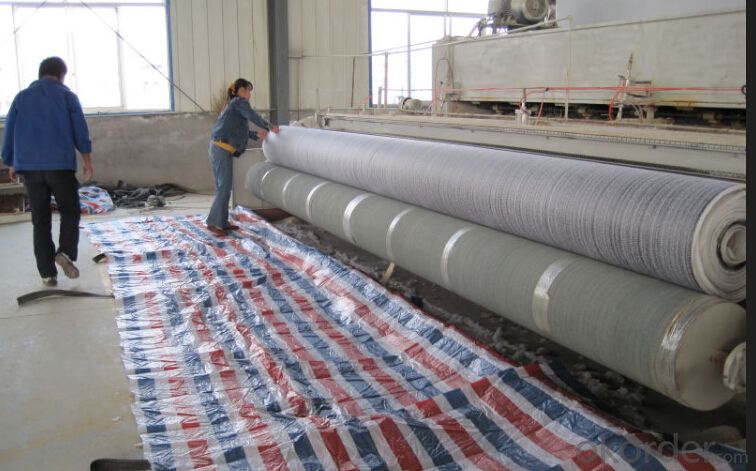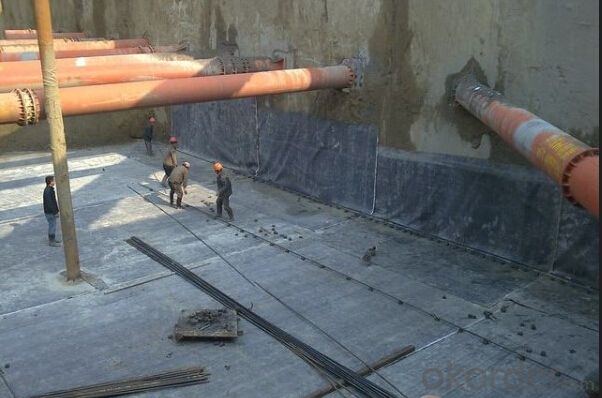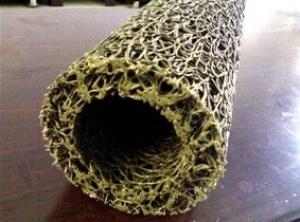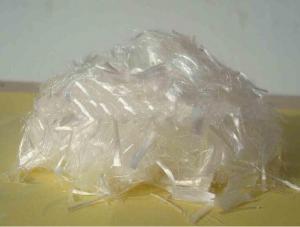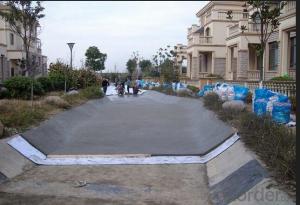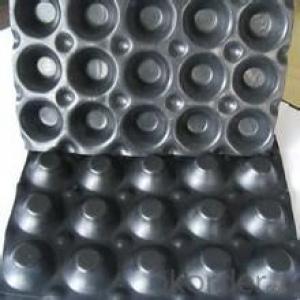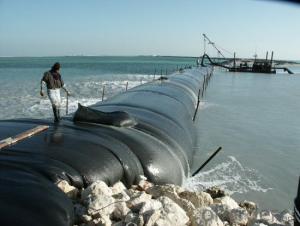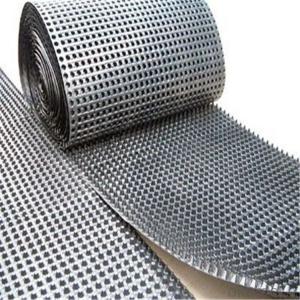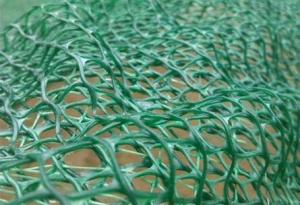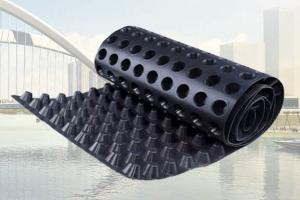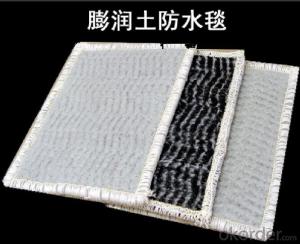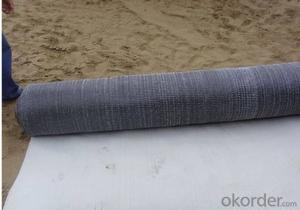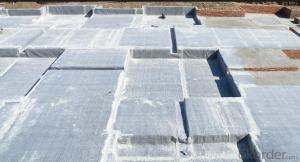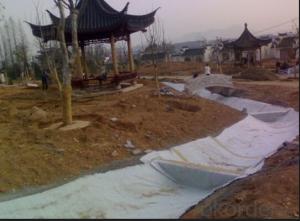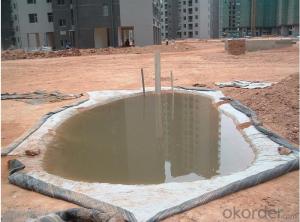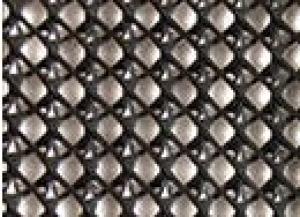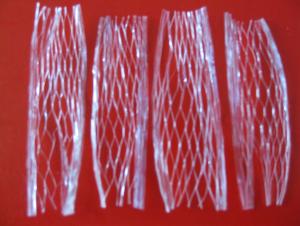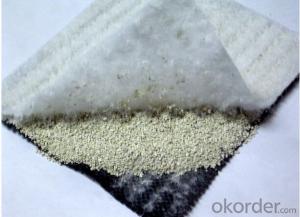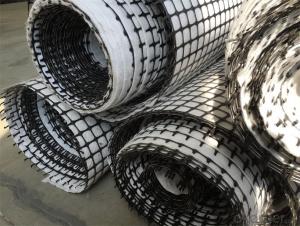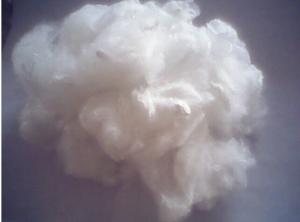Geocomposite Geosynthetic Clay Liner/GCL for Lanfill Use
- Loading Port:
- Qingdao
- Payment Terms:
- TT OR LC
- Min Order Qty:
- 5000 m²
- Supply Capability:
- 100000 m²/month
OKorder Service Pledge
OKorder Financial Service
You Might Also Like
GCL(Geocomposite Geosynthetic Clay Liner)
Description :
Geosynthetic clay liners (GCLs) are high performance needle punched environmental reinforced composites which combine two durable geotextile outer layers with a uniform core of natural sodium bentonite clay to form a hydraulic barrier. Fibers from the non-woven geotextile are needle punched through the layer of bentonite and incorporated into the other geotextile (either a woven or non-woven).when hydrated under a confining load, the bentonite swells to form a low permeability clay layer with the equivalent hydraulic protection of several feet of compacted clay.
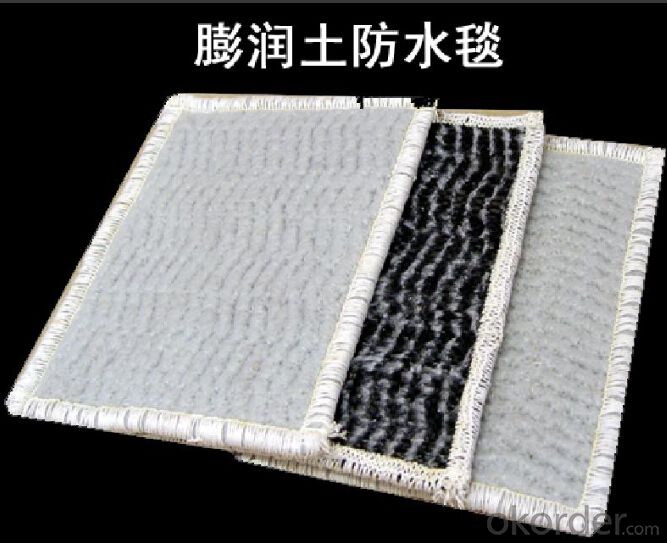
Specification:
Geonet thickness: 5-8mm; Width: 2-4m; Length as requested
Geotextile can be needle punched polyester geotextile, continuous filament PET nonwoven geotextile or Polypropylene nonwoven geotextile, and the unit weight normally 200g/m2.
Features:
1. Excellent drainage function, able to bear long time high pressure load
2. High tensile and shear strength
3. Able to protect its long time and stable hydraulic conductivity
4. Able to bear more than 2000kpa compression load, its anti-pressure capacity much higher than common drainage network
5. Corrosion resistant, acid and alkali resistant.
Applications:
Seepage proofing, anticorrosion, leaking stoppage and reinforcement
1. Municipal engineering, underground construction of subway, buildings as well as the roof tank.
2. Environmental sanitation, solid waste landfill, sewage farm, industrial waste
3. water conservancy, lake, river, dam and reservoir.
4. Garden and park, artificial lake and golf cause pool.
5. Petrochemical engineering, mining industry and agriculture engineering
FAQ
1. Which payment do you accept?
For you convinience,our payment can be L/C,TT
2. Is free sample available?
We can supply free samples if you need.
3. How about your quality?
We have strict quality control system, we make testing on incoming raw material and finished products. Your third party testing is also welcomed. With high quality, our products are used on government projects at home and abroad. Our product quality is accepted by clients from all over the world
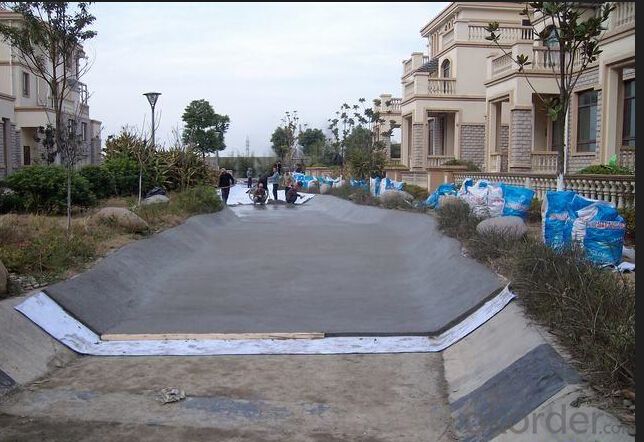
GCL Technical Index
Item | Specification | ||||
GCL-NP | GCL-OF | GCL-AH | |||
Mass per unit g/m2 | ≥ 4000 (not less than the specified value) | ≥ 4000 (not less than the specified value) | ≥ 4000 (not less than the specified value) | ||
GCL expansion index ml/2g | ≥24 | ≥24 | ≥24 | ||
Blue absorption power g/100g | ≥ 30 | ≥ 30 | ≥ 30 | ||
Tensile Strength N/ 100mm | ≥ 600 | ≥ 700 | ≥ 600 | ||
Elongation at maximum load % | ≥ 10 | ≥ 10 | ≥ 8 | ||
Peel strength N / 100mm | Nonwoven geotextile and woven geotextile | ≥ 40 | ≥ 40 | - | |
PE geommebrane and nonwoven geotextile | - | ≥ 30 | - | ||
Permeability coefficient m/s | ≤ 5.0x10-11 | ≤ 5.0x10-12 | ≤ 1.0x10-12 | ||
Hydrostatic pressure resistant | 0.4 Mpa , 1h, no leakage | 0.6 Mpa ,1h,no leakage | 0.6Mpa ,1h, no leakage | ||
Filter loss ml | ≤ 18 | ≤ 18 | ≤ 18 | ||
Durability of bentonite ml/ 2g | ≥ 20 | ≥ 20 | |||
FAQ:
How many quantity for one 20'' container?
About 5,000m2, 16rolls
What's your delivery time?
About 15-20days against deposit received
. What's your package?
Per roll with two pieces woven bag
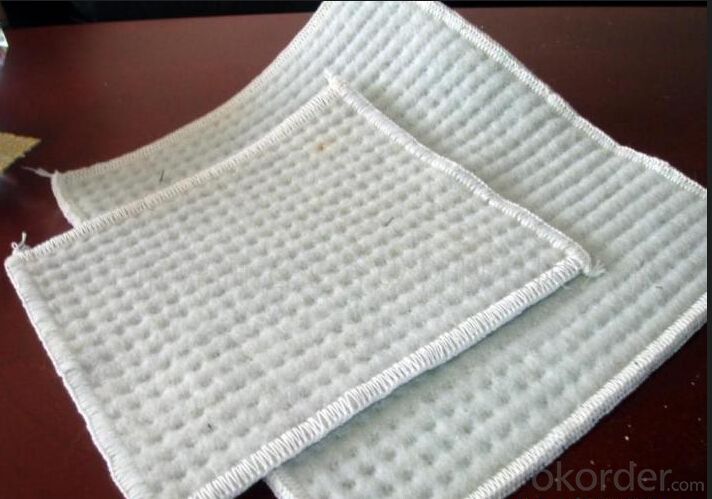
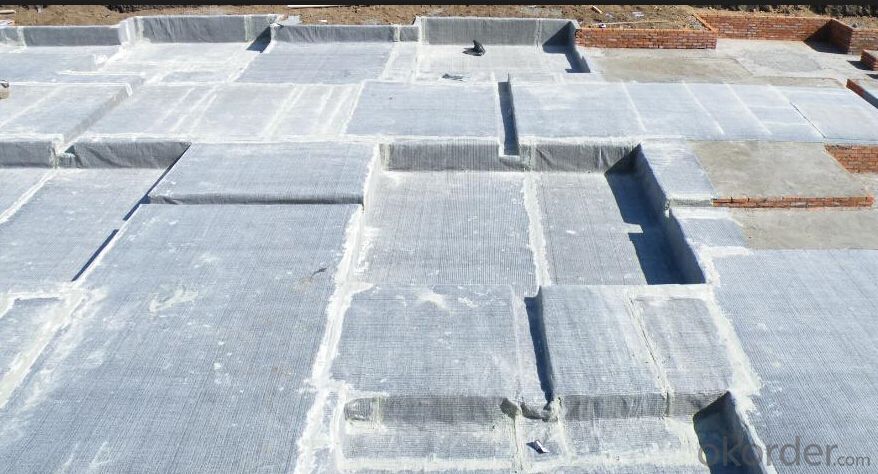
- Q: What are the basic principles of civil material selection?
- Security: There is no doubt that in the specified period of time, there is a certain quality assurance
- Q: Can earthwork products be used for creating natural-looking landscapes?
- Yes, earthwork products can be used for creating natural-looking landscapes. These products, such as rocks, soil, mulch, and gravel, can be strategically placed and shaped to mimic natural formations, creating a visually appealing and authentic landscape design. Additionally, earthwork products can be used to create slopes, berms, and terraces that blend seamlessly with the surrounding environment, enhancing the natural appearance of the landscape.
- Q: What are the different types of geosynthetic clay liners available?
- There are several types of geosynthetic clay liners (GCLs) available, including sodium bentonite-based GCLs, calcium bentonite-based GCLs, and hybrid GCLs that combine both types of bentonite. Each type has its own unique characteristics and performance attributes, allowing for a range of options to suit specific project requirements. Sodium bentonite-based GCLs are commonly used for their high swelling capacity and low permeability, while calcium bentonite-based GCLs offer enhanced shear strength and chemical resistance. Hybrid GCLs provide a balance between the two, offering a combination of swelling capacity, permeability control, and stability.
- Q: Discussion on the importance of materials in civil engineering
- No material, you become archaeological. Only digging!
- Q: How do geosynthetic liners prevent seepage in stormwater detention ponds?
- Geosynthetic liners prevent seepage in stormwater detention ponds by creating a barrier that effectively blocks the flow of water through the pond's base and sides. These liners are impermeable or have low permeability, preventing water from infiltrating or escaping the pond, thereby reducing the risk of seepage.
- Q: How are geosynthetic liners used in landfill and pond liner installations?
- Geosynthetic liners are utilized in landfill and pond liner installations to prevent the leakage of liquids and contaminants into the surrounding soil and water bodies. These liners act as a barrier, providing a protective layer between the waste or water in the landfill or pond and the environment. The liners are typically made of synthetic materials such as high-density polyethylene (HDPE) or polyvinyl chloride (PVC), which have excellent impermeability and durability properties. They are installed in multiple layers, along with geotextiles and compacted clay, to enhance the liner system's effectiveness in preventing seepage. Additionally, geosynthetic liners also help with the proper management and containment of hazardous materials, ensuring the long-term sustainability and environmental safety of landfill and pond facilities.
- Q: Can earthwork products be used in slope stabilization projects?
- Yes, earthwork products can be used in slope stabilization projects. These products, such as geotextiles, geogrids, and geomats, are designed to reinforce and stabilize slopes by improving soil stability, preventing erosion, and enhancing drainage. They are commonly used in various slope stabilization applications, including embankments, retaining walls, and landslide mitigation projects.
- Q: What is the function of geosynthetic drainage materials in sports field drainage?
- The function of geosynthetic drainage materials in sports field drainage is to provide an efficient and effective system for removing excess water from the playing surface. These materials, such as geotextiles and geocomposites, are designed to facilitate the rapid flow of water while preventing soil particles from clogging the drainage system. They aid in maintaining proper field drainage, preventing waterlogged conditions, and ensuring a safe and playable surface for athletes.
- Q: What are the benefits of using geotextile bags?
- Geotextile bags offer several benefits such as erosion control, sediment containment, and shoreline protection. They provide a cost-effective solution for stabilizing slopes, preventing soil erosion, and protecting infrastructure from the damaging effects of water and waves. Additionally, geotextile bags are easy to install, can be filled with various materials, and are environmentally friendly alternatives to traditional methods of erosion control.
- Q: What are the advantages of using geotextile tubes for sediment dewatering?
- Some advantages of using geotextile tubes for sediment dewatering include: 1. Cost-effectiveness: Geotextile tubes are generally more cost-effective compared to other sediment dewatering methods. They require less equipment and labor, resulting in lower overall project costs. 2. Efficient dewatering: Geotextile tubes have a high dewatering efficiency, allowing for the separation of water from sediment quickly and effectively. This leads to faster project completion and reduced downtime. 3. Environmental friendliness: Geotextile tubes offer an environmentally friendly solution for sediment dewatering. They minimize the release of sediment-laden water into surrounding water bodies, reducing the risk of water pollution and protecting aquatic ecosystems. 4. Versatility: Geotextile tubes can be used in various sediment dewatering applications, including shoreline protection, beach nourishment, and land reclamation. They can accommodate different types of sediments, making them a versatile solution for various projects. 5. Minimal space requirements: Geotextile tubes require minimal space for installation, making them suitable for projects with limited available space. They can be easily stacked or arranged to optimize the dewatering process without occupying large areas. Overall, geotextile tubes offer numerous advantages in terms of cost, efficiency, environmental impact, versatility, and space requirements, making them a popular choice for sediment dewatering projects.
Send your message to us
Geocomposite Geosynthetic Clay Liner/GCL for Lanfill Use
- Loading Port:
- Qingdao
- Payment Terms:
- TT OR LC
- Min Order Qty:
- 5000 m²
- Supply Capability:
- 100000 m²/month
OKorder Service Pledge
OKorder Financial Service
Similar products
Hot products
Hot Searches
Related keywords
